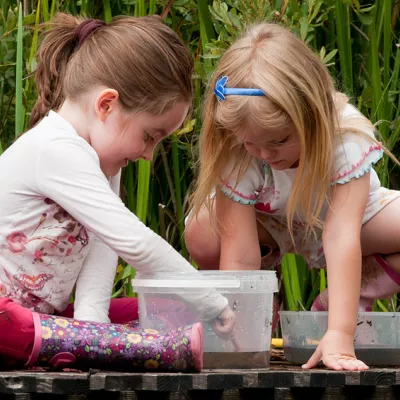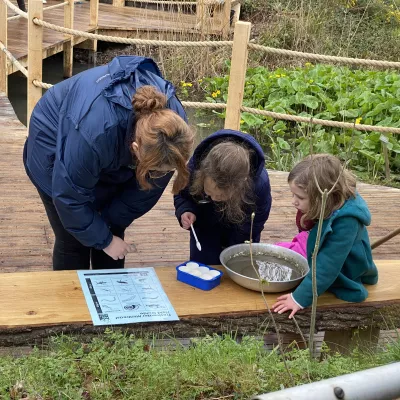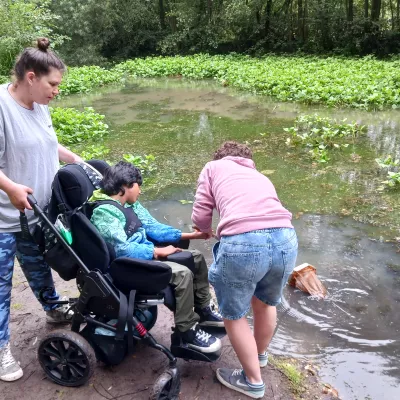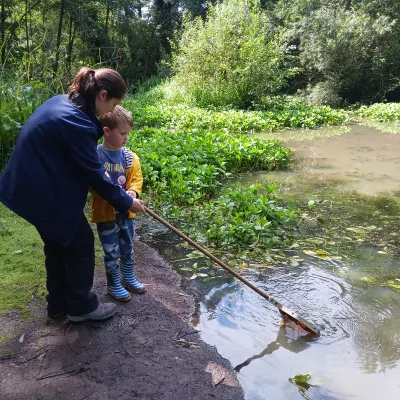A unique chance to discover what lies beneath the water’s surface!
A fascinating opportunity to learn about the creatures that call our ponds home. Each dip offers a unique chance to discover the incredible biodiversity that lives beneath the surface. Watch as your pupils create life-long memories and get up close and personal with these aquatic wonders, and witness the thrill of hands-on science in action.
Pupils will get the chance to use classification keys to help them identify a range of pond life, with our passionate and knowledgeable tutors on hand to lead discussions on each creature’s place in the food chain and how they have adapted to live and thrive in this underwater environment.
- Venue: Available at Tyland Barn Nature Park and Sevenoaks Wildlife Reserve.
- Setting: Outdoor (pond dipping platform) and covered teaching shelter.
- Time: 50 minutes – 90 minutes (depending on number of groups per visit).
EYFS/Key Stage 1?
Why not add on an Explore a Story workshop to make this session more engaging? Explore a range of stories to engage, inspire and excite younger nature explorers, including The Very Hungry Caterpillar, Tadpole’s Promise and many more.
National Curriculum Links
- identify and name a variety of common animals including fish, amphibians, reptiles, birds and mammals
- identify and name a variety of common animals that are carnivores, herbivores and omnivores
- identify that most living things live in habitats to which they are suited and describe how different habitats provide for the basic needs of different kinds of animals and plants, and how they depend on each other
- identify and name a variety of plants and animals in their habitats, including microhabitats
- describe how animals obtain their food from plants and other animals, using the idea of a simple food chain, and identify and name different sources of food.
- notice that animals, including humans, have offspring which grow into adults
- find out about and describe the basic needs of animals, including humans, for survival (water, food and air)
- identify that animals, including humans, need the right types and amount of nutrition, and that they cannot make their own food; they get nutrition from what they eat
- recognise that living things can be grouped in a variety of ways
- explore and use classification keys to help group, identify and name a variety of living things in their local and wider environment
- recognise that environments can change and that this can sometimes pose dangers to living things.
- construct and interpret a variety of food chains, identifying producers, predators and prey.
- describe the differences in the life cycles of a mammal, an amphibian, an insect and a bird
- describe the life process of reproduction in some plants and animals.
- describe how living things are classified into broad groups according to common observable characteristics and based on similarities and differences, including microorganisms, plants and animals
- give reasons for classifying plants and animals based on specific characteristics.
- identify how animals and plants are adapted to suit their environment in different ways and that adaptation may lead to evolution.





